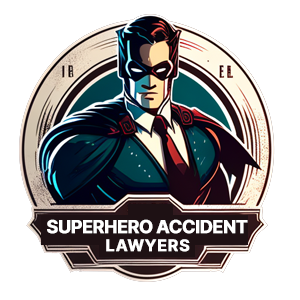Many of the major auto manufacturers in the U. S. have been prosecuted in the courts for manufacturing unsafe seat backs that often fail in a rear-end and head-on collision. Manufacturers, including Ford, General Motors, Hyundai and others, have known for decades that their bucket seats could not withstand the amount of force generated by a typical rear-end or head-on accident.
The Effects of Seat Back Collapse
When a vehicle crashes at high speed, even if the airbags deploy as designed, and seatbelts work properly, but the mechanism holding the seat back rigid fails, allowing it to collapse, serious head, neck and spine injuries often result. Unfortunately, this also can take place during low speed collisions, particularly for children in the rear seat who may be strapped in behind a failed bucket seat. Children hit with the accelerating force of the falling seat or the front occupant’s body can be killed or suffer disabling injuries.
Collapsed seat backs make exiting a car extremely difficult for crash victims. In cases where a defective fuel system has ruptured and a vehicle is on fire, life-long disfigurement and death is not unusual. In actual low-speed, rear-impact crashes, flimsy seat backs have failed to provide adequate protection. Documented “fender bender” cases dramatically prove that seat back failures in low-impact accidents have resulted in severe or fatal injuries. Poorly designed adjustable head restraints add to the hazard because they can be adjusted flush with the top of the seat back, allowing the occupant’s heads to pivot over the headrest. This can cause severe spinal injury, paraplegia and quadriplegia.
Defective Design
When a vehicle’s forward movement is abruptly stopped, seat belts and air bags are designed to keep the occupants from lurching forward. The goal is to maintain the occupant in an upright position and to prevent the body from striking hard surfaces and other occupants or from being ejected. When a car is struck from the rear, the forces work in the opposite direction. The car is then abruptly propelled forward, and occupants are thrown backward. The designed purpose of a seat back is to remain rigid in an upright position and to contain and cushion the passenger’s body. When the seat back collapses, occupants are often ejected, lose control of the vehicle, and are then exposed to multiple crashes and injuries. Occupants are often hurled into the vehicle’s rigid interior structure, resulting in further injury. All of the ensuing catastrophic results are well known to the major manufacturers.
As early as the 1960s, the industry was well aware of the need for properly designed seat backs. In 1968 research concluded after exhaustive testing rear-impact collisions, that rigid seat backs provide the most effective support for occupants during rear-end collisions if the seat back support is designed high enough to resist any rearward movement of the head. A seat that moves rearward during a collision forces the motorist into a semi-reclined position, thereby reducing the measure of support for the head and neck. Injuries to the head and neck were documented in engineering and scientific literature at the time of these tests in the 1960s. These injuries continue to take place because of poor seat back construction, including poorly designed headrests.
Ineffective Safety Standards
Federal Motor Vehicle Safety Standard 207, adopted in 1967, sets static loading limits for seat backs. While seat belts and shoulder harnesses are required to meet dynamic crash test conditions in which the test vehicle collides with a concrete wall at 30 miles per hour, no similar requirements exists for the seat back in rear-impact collisions. Tests dramatically illustrate how a seat back can collapse in a real world, rear-impact crash and still meet the performance requirements of FMVSS 207. Virtually every front seat produced by General Motors from 1970- mid 1990’s was reportedly designed to collapse rearward in impact in which there was a speed change of 15 miles per hour or greater. In fact, GM’s own tests document this seat collapse in crash tests. When a motorist is rear-ended at a speed greater than 15 miles per hour and the seat back collapses, this exposes the occupant to increased chances of spinal, neck and head injuries, resulting in paralysis.
On October 2, 2000 federal regulators announced that they started an investigation regarding a recall of 136,300 Saturn vehicles with faulty seat recliners. Saturn has already recalled some of its 1994-95 model year cars in March of 1999, because of potentially faulty seat backs that could recline or collapse suddenly. The front seat back recliner gear teeth may wear excessively through repeated use, and cause the seat to slip partially rearward when force is applied. If left unrepaired, the wear will continue and may result in the seat back fully reclining when force is applied. If this happens while the vehicle is being driven, it could cause a loss of control and a crash.
Despite these inadequate safety standards the Federal Government has not updated its safety standards for adequate seat back construction. Injuries and deaths occur regularly as the result of this lack of regulation. In November 2009, the Washington State Supreme Court reinstated an $8 million default judgment against Hyundai Motor Co. in a lawsuit over the backward collapse of a front seat in a 1997 crash that left a man paralyzed.
Consult a Defective Seat Back Injury Attorney
Someone injured in a car crash as the result of a collapsing seat back will need to protect their rights to recover damages by consulting an auto crash legal expert. These are complicated and exhaustive cases to pursue and require a product defect attorney who has the legal and financial resources to fully investigate, document, and prosecute the case.

Leave a Reply
You must be logged in to post a comment.